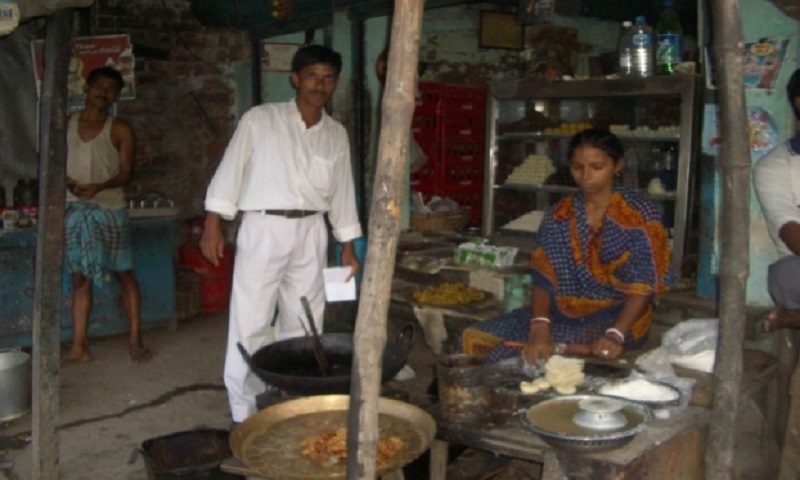
Vivekananda Sevakendra-O-Sishu Uddyan (VSSU), a social developmental organization, was established in 1986 with a vision for community development through community resources. It is presently serving over 130,000 direct beneficiaries of 710 villages in 10 blocks of West Bengal, India. VSSU began by providing basic social development programmes for the local community, such as education, environmental programmes, etc. To sustainably support these development activities financially, VSSU started its savings-based micro credit programmes in 1994. VSSU is gradually expanding its area of operation to skills training, education, employment generation and sustainable agriculture to help meet the Sustainable Development Goals (SDGs).
Techniques and strategies used for poverty alleviation
VSSU is known for its self-sustainable small savings-based credit services. This means that VSSU is not primarily a lending facility, but an organization that aims to create a savings habit among its underprivileged clients to strengthen their financial position and help them avoid future instability. VSSU also offers loans to its clients, but the risk incurred by VSSU is quite low because of the savings balances it also holds. Clients are less likely to default on their loans because they understand that they also have savings invested in VSSU. This helps the clients to trust the institution and utilize their resources in a proper manner.
VSSU offers several savings plans for its clients that cannot access regular banking services. Daily, Weekly, Recurring and One-time deposit options all have savings plans that come with loan facilities. The daily deposit scheme is most ideal for low income clients as the savings amount does not even qualify them formal banking services. Due to the low cost of the fund, VSSU can provide loans to its members at relatively cheaper rates. Additionally, VSSU’s door-step services allow clients to maintain their time earning income during day hours instead of sacrificing those hours to travel to a bank. Through these strategies, VSSU is able to mobilize enough resources for the long term development of members of society that have been left behind.
A Unique Savings-based Credit Model:
Our innovative initiatives focus on the delivery of client-oriented products and services for sustainable development. Most monetary financial institutions (MFIs) work with bank loans but we have always focused on savings based credit. In using that, we have proven that a savings led model can lead to a win-win situation for both the client and the MFI in the long run. At the root of this unique success is that VSSU employs a savings-based credit system, while other organizations use conventional credit systems that rely on bank financing/grants. VSSU’s approach to microfinance is much more flexible. Loans are secured with guarantor’s deposits and tailored to the client’s needs. VSSU’s loan amount & repayment tenure’s flexibility is determined jointly based on the proposed project that the client wishes to invest in. Clients are encouraged to save a minimum amount regularly to feel secure and to enjoy hassle free loan facilities on demand. Over the years, VSSU has used the revenues from its microfinance activities to fulfill the objective of the MDGs through education, employment generation, food security for children and the elderly, social forestry project, basic health care and other projects that work towards social development. The projects carried out by these loans demonstrate an immense and pure commitment to the communities that VSSU has become a part of.
A Case study
Sulata Mondal of Polerhat, a housewife of an unemployed husband from a family living below the poverty line, always wished to be self-reliant and to support her family. In 1998 she started a small sweets shop at Polerhat with VSSU’s loan of only Rs.6000. Over the years, she expanded her shop with several VSSU loans. With the help of her husband, at present she earns about Rs.12,000 per month. Today Sulata is the proud proprietor of a business worth Rs. 300,000 which has enabled her to send her daughter to a neighboring state for higher studies and she plans to soon open up a restaurant adjacent to her shop.
Microfinance Alone is Not Enough
We have realized credit and microfinancing schemes alone are not enough. There is also a need for facilities and institutions that provide insurance, incentives for community projects, training, exposure, and marketing. These need to be delivered as a package so that even the poorest clients can have access to basic needs. The microfinance sector in India has recently witnessed the catastrophic impact of an excessive focus on numerical achievements. Development does not follow any scientific formulae of progression, and it needs to be client focused, process-oriented and it must take on a holistic approach with sustainable development as its goal. It is very unfortunate that in India, a person living in poverty pays 24% interest for business development loans while a wealthy business person pays only 10-12% interest for luxurious needs that do not redistribute wealth. To make real social inclusion, we need a more supportive regulatory environment with reduced interest rates and subsidy facilities, openness from bankers to see beyond traditional banking, as well as donors and lenders that view financial inclusion as a compatible goal with other aspects community development.
Learn more about Vivekananda Sevakendra-O-Sishu Uddyan.
Learn more about our work on poverty eradication at social.un.org/poverty
 Welcome to the United Nations
Welcome to the United Nations